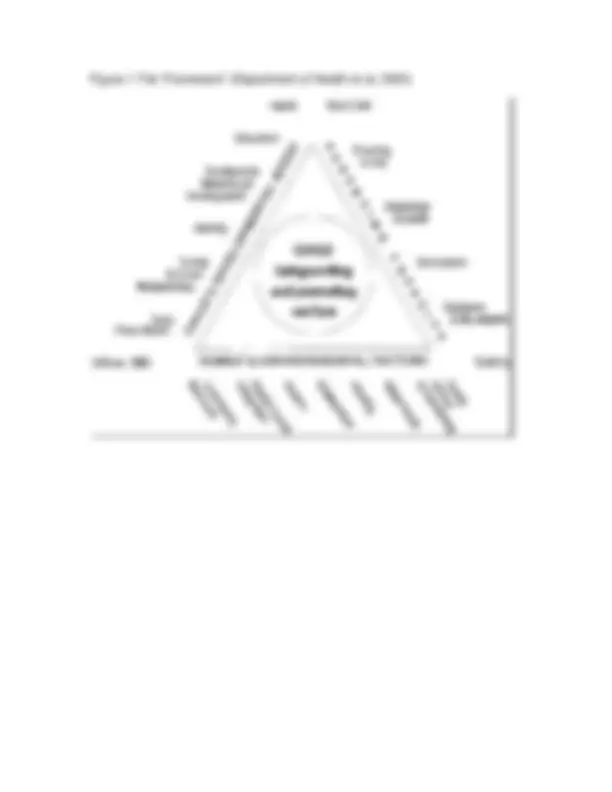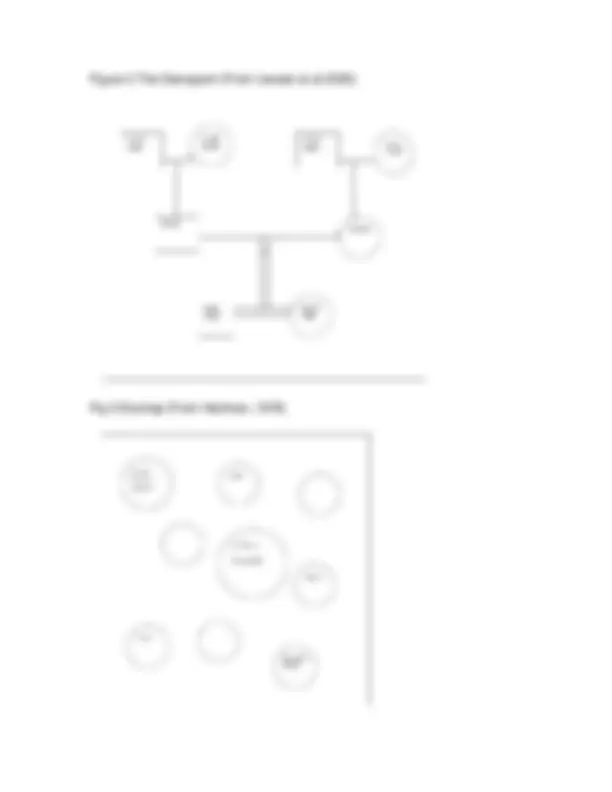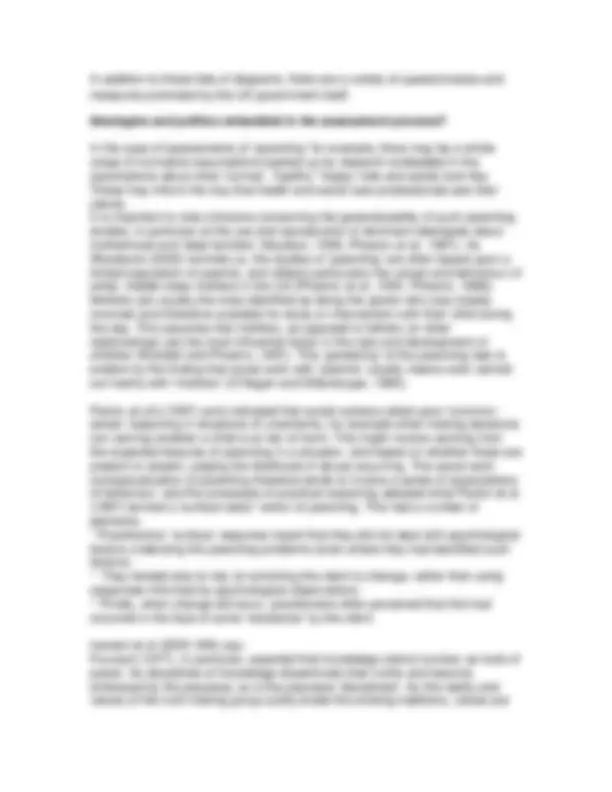





Study with the several resources on Docsity

Earn points by helping other students or get them with a premium plan


Prepare for your exams
Study with the several resources on Docsity

Earn points to download
Earn points by helping other students or get them with a premium plan
Community
Ask the community for help and clear up your study doubts
Discover the best universities in your country according to Docsity users
Free resources
Download our free guides on studying techniques, anxiety management strategies, and thesis advice from Docsity tutors
Overall, most definitions relate to one or more of the five stages of the framework for assessment proposed by Milner and O'Byrne (2002: 6). 1. Preparation.
Typology: Study notes
1 / 7

This page cannot be seen from the preview
Don't miss anything!




Psychosocial Assessment in Social Work
Origins of assessment
Here’s a quote from Iversen et al (2005: 690) on the origins of assessment in social work: “Beginning with the settlement movements in the United States and England, the social work profession was a child of cultural modernism (Addams, 1910/1960). As Jane Addams declared, based on her study of English settlements, ‘The early American Settlement... insisted that each new undertaking should be preceded by carefully ascertained facts’ (1910/1960, p. 101). Subsequently, social work assumptions and practices became increasingly allied with rationalist principles and practices of science (Addams, 1910/1960; Parton and O’Byrne, 2000; Walker, 2001). From the scientific standpoint, objects of study were ‘there in the world’, and the task of science was to describe and explain these objects as accurately as possible, without personal, ideological or other bias. These suppositions were most clearly represented in the social work diagnostic perspective (Woods and Hollis, 1990). This perspective, informed initially by medical science, posited the clinician as an expert investigator who ferrets out essential, individualized patterns of dysfunction in order to generate a blueprint for ‘corrective’ treatment.”
Definitions of assessment
More recent definitions of the assessment process often go something like this:
“We see assessment as a journey for which social workers need to select the most appropriate map if they are to get to their destinations quickly and efficiently. We do not believe that assessment can be easily separated from intervention – change happens at all stages of the social work process – but we do think it dangerous to read a road map while driving. So we recommend that social workers familiarise themselves with a range of maps before planning the assessment journey. Should they get lost on the way or should the service user not meet them at the destination, they will then need to consult the maps again” (Milner and O’Byrne, 2002: 4).
“Assessment is an ongoing process, in which the client participates, the purpose of which is to understand people in relation to their environment; it is a basis for planning what needs to be done to maintain, improve or bring about change in the person, the environment or both” (Coulshed and Orme, 1998: 21).
“Workers have to develop an understanding of the nature of the particular social problem being tackled, and the feasibility of different kinds of solution and their possible consequences. Realistic assessment has
involved in specific problems and their possible solutions
Overall, most definitions relate to one or more of the five stages of the framework for assessment proposed by Milner and O’Byrne (2002: 6)
Examples of assessment aids
Figure 2 The Genogram (From Iversen et al 2005)
Fig 3 Ecomap (From Hartman, 1978)
In addition to these kids of diagrams, there are a variety of questionnaires and
measures promoted by the UK government itself.
Ideologies and politics embedded in the assessment process?
In the case of assessments of ‘parenting’ for example, there may be a whole range of normative assumptions backed up by research embedded in the assumptions about what ‘normal’, ‘healthy’ ‘happy’ kids and adults look like. These may inform the way that health and social care professionals see their clients. It is important to note criticisms concerning the generalizability of such parenting studies, in particular at the use and reproduction of dominant ideologies about motherhood and ‘ideal families’ (Nicolson, 1993; Phoenix et al. , 1991). As Woodcock (2003) reminds us, the studies of ‘parenting’ are often based upon a limited population of parents, and reflects particularly the values and behaviour of white, middle-class mothers in the US (Phoenix et al. , 1991; Phoenix, 1986). Mothers are usually the ones identified as being the parent who was closely involved (and therefore available for study or intervention) with their child during the day. This assumes that mothers, as opposed to fathers (or other relationships) are the most influential factor in the care and development of children (Woollett and Phoenix, 1991). This ‘gendering’ of the parenting task is evident by the finding that social work with ‘parents’ usually means work carried out mainly with ‘mothers’ (O’Hagan and Dillenburger, 1995).
Parton et al’s (1997) work indicated that social workers relied upon ‘common- sense’ reasoning in situations of uncertainty, for example when making decisions con cerning whether a child is at risk of harm. This might involve working from the expected features of parenting in a situation, and based on whether those are present or absent, judging the likelihood of abuse occurring. The social work conceptualization of parenting therefore tends to involve a series of expectations of behaviour, and the processes of practical reasoning adopted what Parton et al (1997) termed a ‘surface-static’ notion of parenting. This had a number of elements.
Iversen et al (2005: 694) say: Foucault (1977), in particular, asserted that knowledge claims function as tools of power. As disciplines of knowledge disseminate their truths and become embraced by the populace, so is the populace ‘disciplined’. As the reality and values of the truth-making group subtly erode the existing traditions, voices are
Pheonix, A. (1986) ‘Theories of gender and black families’, in Arnot, M. and Weiner, G. (eds.), Gender Under Scrutiny, London: Hutchinson. Reprinted (1990) in Lovell, T. (ed.), British Feminist Thought , Oxford, Basil Blackwell. Phoenix, A., Woollett, A. and Lloyd, E. (1991) Motherhood: Meanings, Practices and Ideologies, London: Sage. Smale, G., Tuson, G. and Statham, D. (2000) Social work and social problems: Working towards social inclusion and social change, Basingstoke: Macmillan. Walker, S. (2001) Tracing the contours of postmodern social work, British Journal of Social Work, 31, pp. 29–39. Woodcock, J. (2003) The Social Work Assessment of Parenting: An Exploration, British Journal of Social Work, 33, 87–106. Woods, M. E. and Hollis, F. (1990) Casework: A Psychosocial Therapy, 4th edn, New York, McGraw-Hill. Woollett, A. and Pheonix, A. (1991) ‘Psychological views of mothering’, in Phoenix, A., Woollett, A. and Lloyd, E. (eds.), Motherhood: Meanings, Practices and Ideologies, London, Sage.